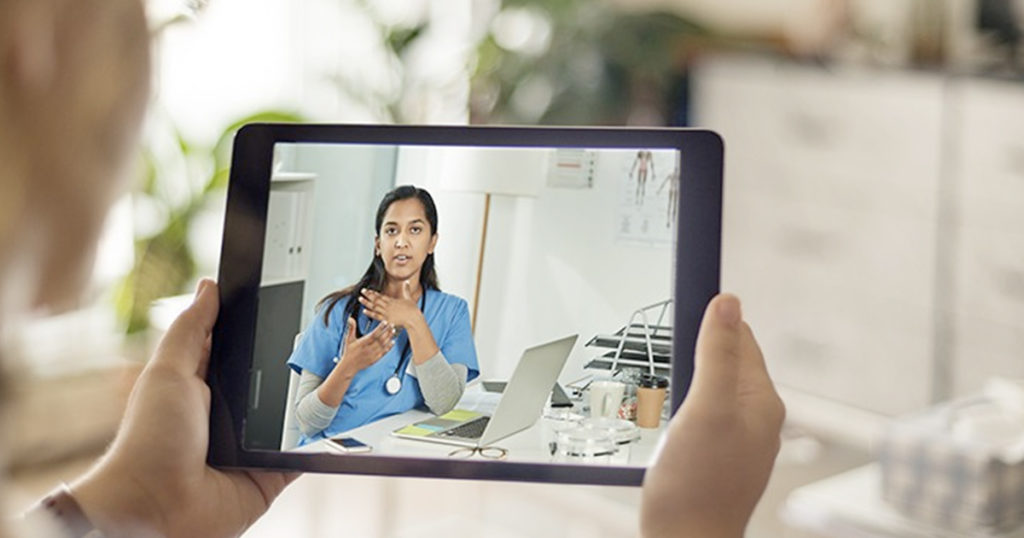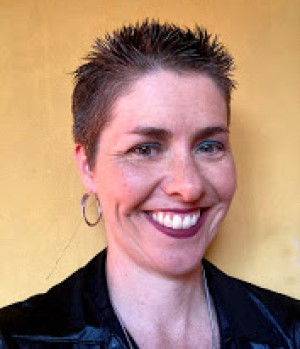Pasadena, California-based Heritage Clinic, a division of the Center for Aging Resources, provides mental health services in Los Angeles County to older adults experiencing substantive and persistent mental health concerns.
THE PROBLEM
Prior to the COVID-19 pandemic, many services were provided in the clients’ homes or elsewhere in the field. For some who are unable to leave their home for a variety of reasons, their session with their clinician was one of the few social interactions in their lives.
Others are homeless, without the security of four walls. They brave the elements and potential violence on the streets. Many have multiple medical issues further complicating their lives.
“For all of these reasons, our clients are some of the most vulnerable people in terms of the COVID-19 pandemic,” said Robyn East, financial analyst at Heritage Clinic. “Providing services to them in person would put them at risk of exposure, despite all of the precautions staff might have taken. With the stay-at-home order, clients were more isolated than ever before.”
The few social activities they may have participated in were no longer options, she added. Fear of catching COVID-19, mixed with isolation, exacerbated their already difficult-to-control mental health symptoms, she said.
“To be able to show an average reduction [in depression] across all clients given that we were having very few in-person sessions speaks volumes for the healing ability of telemedicine.”
Robyn East, Heritage Clinic
“Telemedicine is a wonderful solution to maintain regular therapeutic contact while reducing the risk of potential exposure,” she explained. “It allowed clients to get the help they need without risking their health. Many clients had never used technology before, and after becoming familiar with how to use video calling were able to connect with family and friends; find groups to participate in for social activities, exercise or hobbies; and learn about topics they found interesting.”
Heritage Clinic uses the Doxy.me, Zoom and Microsoft Teams video conferencing systems to facilitate telehealth. It uses GrandPads and iPads for hardware.
“In the beginning of the pandemic, we also used FaceTime and Duo under the HIPAA waiver,” East recalled. “GrandPads are particularly useful for our older adults as they provide tech support and a user-friendly layout that has been easy for our clients to understand.”
PROPOSAL
Telemedicine solved the issue of isolation and risk of exposure of in-person therapy.
“By using Doxy.me, iPads or GrandPads, the clients are able to see and speak with their clinician regularly in the safety of their home,” East said. “Phone sessions are also an option, but the personal connection is not as robust without the video component.”
The GrandPads have been particularly helpful as clinicians serve many individuals who did not have smart devices or even the most basic Internet access, she added.
MARKETPLACE
There are many vendors of telemedicine technology and services on the health IT market today. Healthcare IT News recently compiled a comprehensive list of these vendors with detailed descriptions. To read this special report, click here.
MEETING THE CHALLENGE
“Almost overnight, the landscape changed,” East stated. “Our IT department worked diligently to find HIPAA-compliant, user-friendly solutions to meet our clients’ needs. Clinicians have always utilized technology for documentation in the electronic health record. In addition, some meetings and trainings had been conducted electronically.”
However, conducting therapy via video was new to all of them, she said.
“Our teams met regularly to troubleshoot, share advice and learn from each other,” she said. “The nuances of building or strengthening the therapeutic relationship through video took time to learn. The dynamic was different. Clinicians also had to learn how to help clients with the inevitable technology glitches that would occur from time to time.”
Clients, some of whom didn’t even have a cell phone, suddenly had to learn how to connect with their clinician through a tablet or smartphone that they recently were given. It was a huge change.
“Our staff supported them in the transition, and GrandPads offers technical support that is very useful for clients who need extra help while adjusting to the new technology,” she explained. “Overall, it is quite impressive how clients have been able to adapt and even embrace technology as a window to a larger world with opportunities for social interactions previously unavailable.”
RESULTS
The PHQ-9 is an outcome that measures depression symptoms, and Heritage Clinic administers this measure every six months to clients.
“Across the agency, comparing PHQ-9 from January to June 2020 and from July to December 2020, the average change in PHQ-9 score was a drop of 1.73, which indicates a slight decrease in depressive symptoms,” East explained.
“Obviously, some clients had more symptoms later in the year, as the isolating situation with COVID-19 is challenging for even the most emotionally healthy of us. But to be able to show an average reduction across all clients, given that we were having very few in-person sessions, speaks volumes for the healing ability of telemedicine.”
USING FCC AWARD FUNDS
Heritage Clinic in 2020 was awarded $41,457 by the FCC telehealth funding program to use telehealth services and devices to treat older adults in Los Angeles County with mental health issues who are underserved and often low-income, many of whom are homeless and especially vulnerable during the COVID-19 outbreak.
“The FCC telehealth award funds have allowed us to expand the number of clients we were able to provide with devices, specifically iPads, which are used to connect with their clinician, but can also be used to connect with family, learn online and find entertainment,” East concluded.
“Most of our clients did not have a device capable of connecting via video calls, so the FCC telehealth award funds were pivotal in quickly getting devices into the hands of our clients so they could continue their much-needed mental health therapy.”
Twitter: @SiwickiHealthIT
Email the writer: bsiwicki@himss.org
Healthcare IT News is a HIMSS Media publication.

